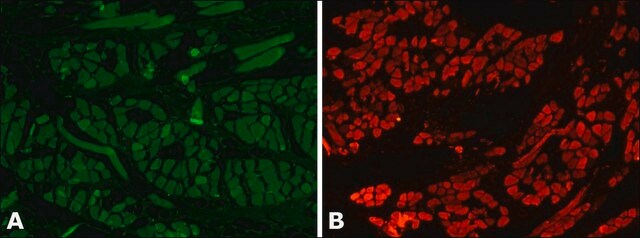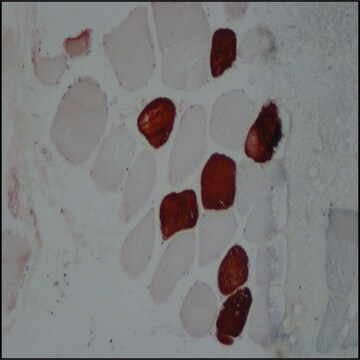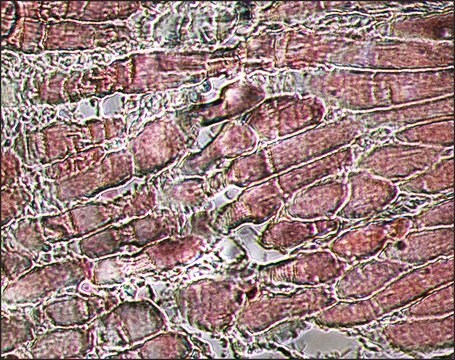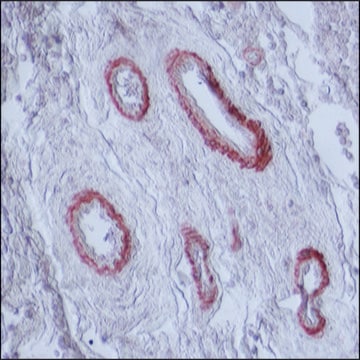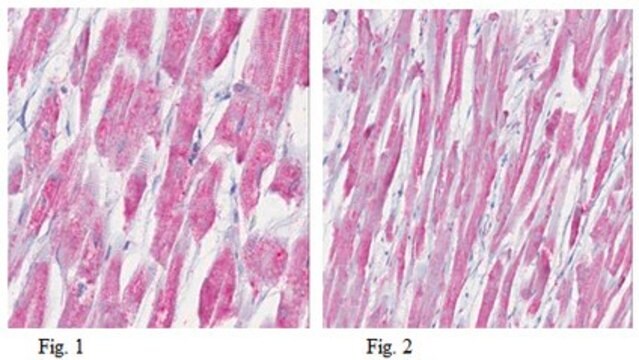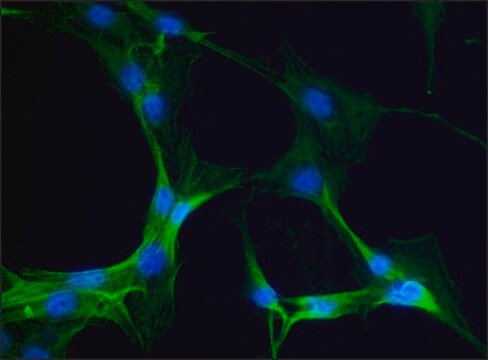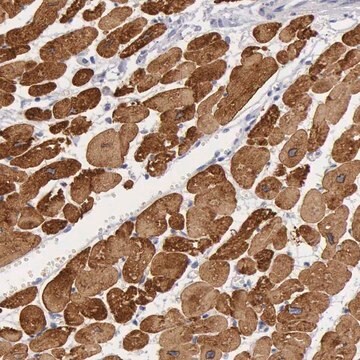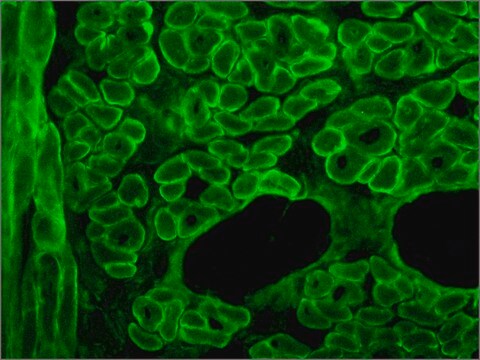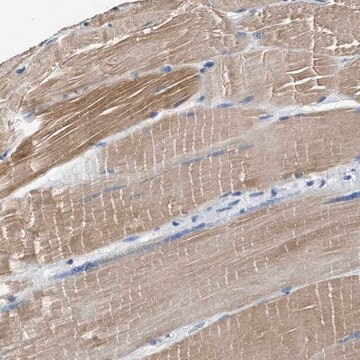M4276
Monoclonal Anti-Myosin (Skeletal, Fast) antibody produced in mouse
clone MY-32, ascites fluid
Synonim(y):
Anti-Myosin Antibody
About This Item
Polecane produkty
pochodzenie biologiczne
mouse
białko sprzężone
unconjugated
forma przeciwciała
ascites fluid
rodzaj przeciwciała
primary antibodies
klon
MY-32, monoclonal
zawiera
15 mM sodium azide
reaktywność gatunkowa
rat, chicken, rabbit, mouse, human, bovine, guinea pig, feline
metody
immunohistochemistry (formalin-fixed, paraffin-embedded sections): 1:400 using skeletal muscle tissue
indirect immunofluorescence: 1:400
western blot: 1:1,000 using rabbit leg muscle extract
izotyp
IgG1
Warunki transportu
dry ice
temp. przechowywania
−20°C
docelowa modyfikacja potranslacyjna
unmodified
informacje o genach
human ... MYH1(4619) , MYH2(4620)
mouse ... Myh1(17879) , Myh2(17882)
rat ... Myh1(287408) , Myh2(691644)
Szukasz podobnych produktów? Odwiedź Przewodnik dotyczący porównywania produktów
Opis ogólny
Specyficzność
Immunogen
Zastosowanie
- immunohistochemistry
- immunostaining
- western blotting at a dilution 1:1000 and 1:90000†
- indirect immunofluorescence (dilution 1:400) of formalin-fixed, paraffin-embedded sections of human or animal skeletal muscle tissue preparation.
- dot immunobinding on muscle extracts or purified myosin preparations
Oświadczenie o zrzeczeniu się odpowiedzialności
Nie możesz znaleźć właściwego produktu?
Wypróbuj nasz Narzędzie selektora produktów.
Kod klasy składowania
10 - Combustible liquids
Klasa zagrożenia wodnego (WGK)
WGK 3
Temperatura zapłonu (°F)
Not applicable
Temperatura zapłonu (°C)
Not applicable
Certyfikaty analizy (CoA)
Poszukaj Certyfikaty analizy (CoA), wpisując numer partii/serii produktów. Numery serii i partii można znaleźć na etykiecie produktu po słowach „seria” lub „partia”.
Masz już ten produkt?
Dokumenty związane z niedawno zakupionymi produktami zostały zamieszczone w Bibliotece dokumentów.
Klienci oglądali również te produkty
Nasz zespół naukowców ma doświadczenie we wszystkich obszarach badań, w tym w naukach przyrodniczych, materiałoznawstwie, syntezie chemicznej, chromatografii, analityce i wielu innych dziedzinach.
Skontaktuj się z zespołem ds. pomocy technicznej
